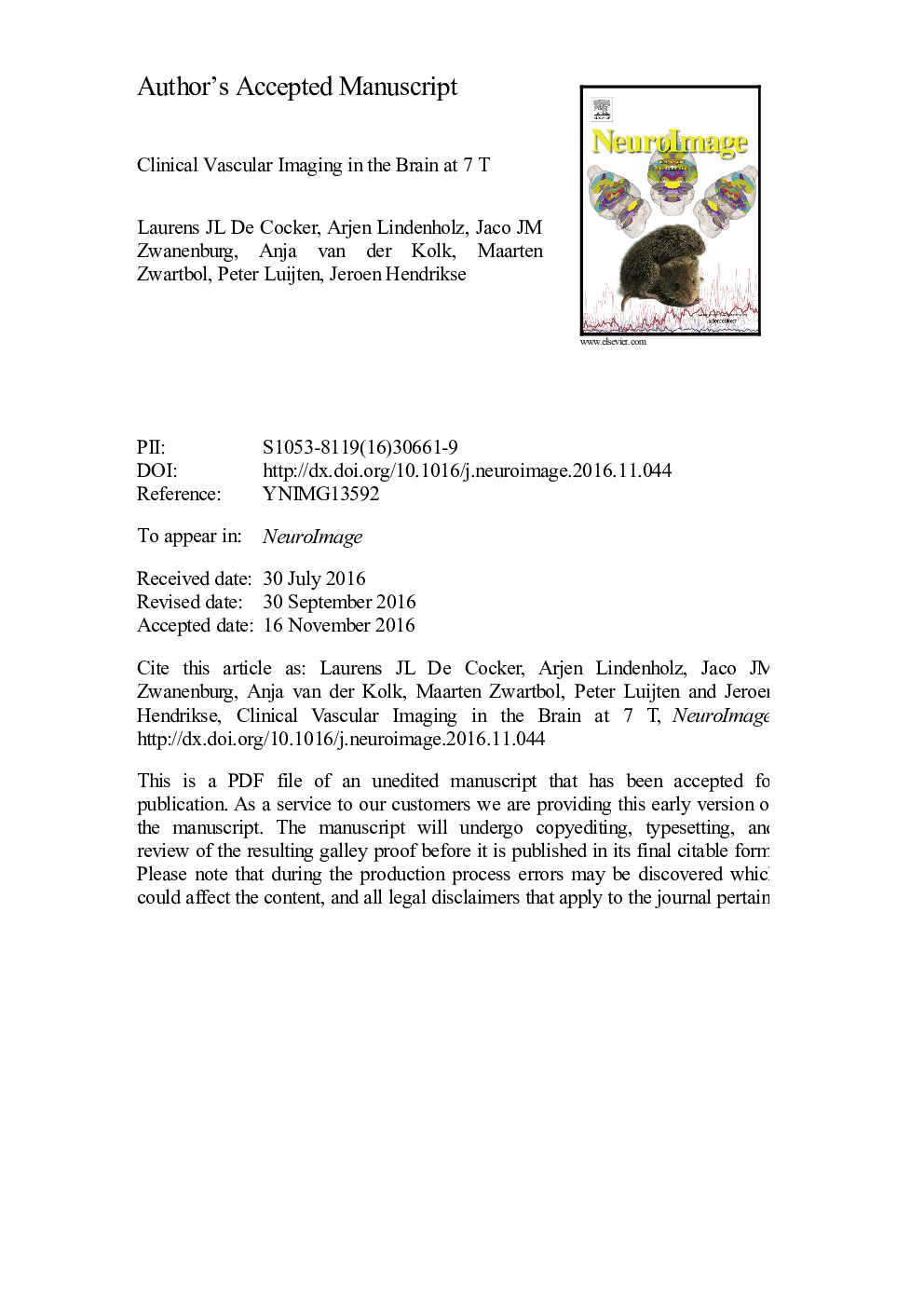| Article ID | Journal | Published Year | Pages | File Type |
|---|---|---|---|---|
| 8687252 | NeuroImage | 2018 | 27 Pages |
Abstract
Stroke and related cerebrovascular diseases are a major cause of mortality and disability. Even at standard-field-strengths (1.5Â T), MRI is by far the most sensitive imaging technique to detect acute brain infarctions and to characterize incidental cerebrovascular lesions, such as white matter hyperintensities, lacunes and microbleeds. Arterial time-of-flight (TOF) MR angiography (MRA) can depict luminal narrowing or occlusion of the major brain feeding arteries, and this without the need for contrast administration. Compared to 1.5Â T MRA, the use of high-field strength (3Â T) and even more so ultra-high-field strengths (7Â T), enables the visualization of the lumen of much smaller intracranial vessels, while adding a contrast agent to TOF MRA at 7Â T may enable the visualization of even more distal arteries in addition to veins and venules. Moreover, with 3Â T and 7Â T, the arterial vessel walls beyond the circle of Willis become visible with high-resolution vessel wall imaging. In addition, with 7Â T MRI, the brain parenchyma can now be visualized on a submillimeter scale. As a result, high-resolution imaging studies of the brain and its blood supply at 7Â T have generated new concepts of different cerebrovascular diseases. In the current article, we will discuss emerging clinical applications and future directions of vascular imaging in the brain at 7Â T MRI.
Related Topics
Life Sciences
Neuroscience
Cognitive Neuroscience
Authors
Laurens JL De Cocker, Arjen Lindenholz, Jaco JM Zwanenburg, Anja G van der Kolk, Maarten Zwartbol, Peter R Luijten, Jeroen Hendrikse,
